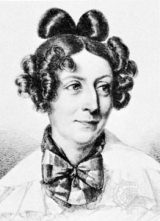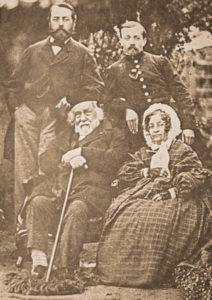
El Verdugo
THE HUMAN COMEDY – Honoré de Balzac XVth volume of works of Honoré de Balzac edited by widow André Houssiaux, publisher, Hebert and Co, successors, 7 rue Perronet – Paris (1874)
Philosophical studies 
EL VERDUGO (1829)
Work dedicated by Honoré de Balzac A MARTINEZ DE LA ROSA
Analysis and history This tale appeared in the January 20, 1830 issue of La Mode, under the title: Souvenirs soldatesques: El Verdugo Guerre d’Espagne (1809). This title indicates that the tale belongs to a series of reminiscences of military life, most of which were later collected in a collective work, Contes bruns. These were both anecdotes Balzac had heard told at his friends Carraud’s Saint-Cyr by former officers of the Grande Armée, and episodes from the Spanish campaign recounted by the Duchesse d’Abrantès, wife of Marshal Junot, who was Balzac’s mistress and muse at the time. El Verdugo, like Les Marana, belongs to the latter series. Initially published in serial form, the story was published in volume form by Gosselin in 1831. It appears in the Etudes philosophiques de la Comédie humaine. The subject is atrocious, barbaric and very romantic: it’s the story of a sort of French Oradour in a village in Vizcaya, near Santander. The entire French garrison was massacred by the inhabitants, who were awaiting the arrival of the English fleet. The English don’t land. The French retaliated terribly, mainly against the family of the Marquis de Leganès, a Spanish grandee, who had gathered the officers of the French garrison in his château on the night of the uprising under the pretext of holding a ball in their honor. Thanks to Clara, only Major Victor Marchand’s life was saved. The general in command of the province orders the execution of all family members and servants at the château. We begged him, but he was inflexible. To avoid extinguishing this illustrious family, he only agreed to spare the son who would take the place of the executioner for the execution of his parents, brothers and sister Clara. The whole family throws itself at the feet of the eldest to accept this responsibility, which will allow the name to survive. Begged by his family, Juanito assumes the role of executioner and kills them one by one. With Clara’s head on the block, Commandant Marchand offers her marriage in exchange for her life, which she refuses. It is executed. The Marquise de Leganès, unable to bear inflicting her son’s death, breaks her head on a rock. It’s a typical example of one of the theses of Philosophical Studies: an idea that has become all-powerful, accepted by an entire group and leading to terrible deeds. Balzac has Félix Davin explain the meaning of this tale: “the idea of dynasty putting an axe in the hand of a son, making him commit all crimes in one (that of parricide)”. Short story written by the author in Paris, October 1829 Source analysis and history: Preface from the 24th volume of La Comédie Humaine published by France Loisirs in 1987, based on the full text published under the auspices of the Société des Amis d’Honoré de Balzac, 45, rue de l’Abbé-Grégoire – 75006 Paris.
The characters Léganès: Spanish noble family made up of the : Marquis de Léganès, his wife, and five children: Clara, Juanito, Filippo, Manuel and Mariquita. They were all executed in 1808, with the exception of Juanito. Victor Marchand: A soldier spared from the massacre thanks to Clara’s intervention. Source for character genealogy: Félicien Marceau: Balzac et son monde (Gallimard).
Some of Honoré’s closest friends

Duchess Laure d’Abrantes

Zulma Carraud and her grandchildren
Born on November 6, 1784, Laure Adelaïde Constance Permon married Jean-Andoche Junot. Duchesse d’Abrantès, she was the muse and mistress of Honoré de Balzac. She tried her hand at a literary career, but was unsuccessful. Ruined, she died on June 7, 1838 in total destitution. Ahe Balzac family : Carraud family Touraine family composed of : the Commandant died on February 13, 1864 in Nohant. Private Yorick was killed at Sedan in 1870. He is 36 years old. September 1, 1874, death of his brother Silas.
Source: Wikipedia.

No Comments